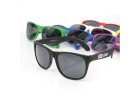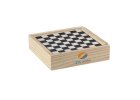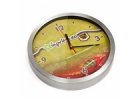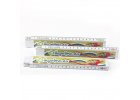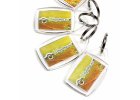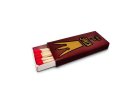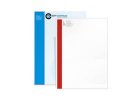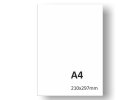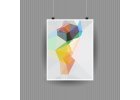CMYK
The model includes four basic colors:
- Cyan;
- Magenta;
- Yellow;
- Black (blacK), also known as Key.
Ideally, only the first three colors (CMY model) would be sufficient, as subtractive mixing of these should produce black. However, in practice, using standard dyes produces a dark gray color, and black is significantly cheaper compared to other colors. Therefore, most printing techniques use a fourth black color.
Motivation for the CMYK Model
For example, each pixel of a digital photograph is represented by three values of the RGB color model (red, green, blue), i.e., the amount of each color component of light hitting the device sensors (either a scanner or a camera). The camera creates an image based on additive color mixing—when mixing the light of two colors, the new color is formed based on the combination of their spectra (mixing all colors together results in white).
Printing, however, uses subtractive color mixing, which works oppositely—mixing two pigments limits the color spectrum of reflected light to the part that is not present in the spectrum of any pigment (mixing all pigments results in no reflection and thus black). The complementary colors to red, green, and blue light are cyan, magenta, and yellow dyes. For example, yellow light is created by combining red and green, so it lacks the blue part of the spectrum; therefore, yellow pigment absorbs blue and reflects back only the combination of red and green components—i.e., yellow.
Color Conversion
Before printing an RGB image, it is necessary to convert it to the CMYK color space (mode). This process is handled either by the printer driver or, in professional printing, by a RIP (Raster Image Processing). However, just as the RGB model is not perfect, neither does CMYK cover the entire color spectrum; thus, some part of the color spectrum cannot be displayed by devices working in CMYK. This is evident from the following comparison of the RGB and CMYK color spectra:
As seen, printing of supplemental colors (pure red, pure green, and pure blue) is nearly impossible. This is mainly because monitors emit light directly, whereas prints reflect light. Fortunately, in the case of photographs, this effect is not noticeable in the final result.
Source: Wikipedia

